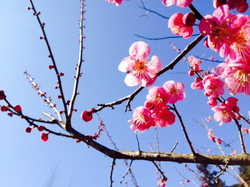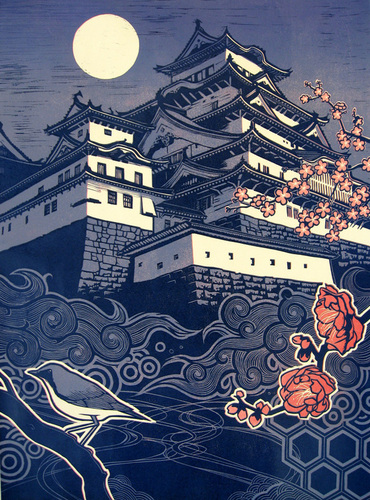 “And so castles made of sand, fall in the sea, eventually” ― Jimi Hendrix A house razed, a rice paddy paved, year after year the air flows more easily through the streets of the Good Hood. My elderly neighbours pass on, leaving their grand old homes to crumble and fall, or to be sold off by distant relatives and crushed by the demolition men in peppermint green uniforms and pink excavators. The other day I paid a visit to the real estate agent to ask about a vacant lot where dear old Mrs Mizutani and her home once stood. Asking price for the overgrown lot? The agent punched his calculator and pushed it across the table top. Holy Buddha, man! I could build a small Taj Mahal for that, I said. He shrugged, pocketed his Casio and glanced at the smoker’s room. The Good Hood, a traditional mud-walled and tiled-roof neighborhood in the seaside city of Himeji, has been my home for 17 years. Its narrow streets have outlived WWII fire bombings, earthquakes and typhoons; it has sheltered bank workers and barbers, steelworkers and old mobsters with faded tattoos, foreign English teachers and their countless girlfriends, and now snakes, bats and exotic pets-on-the-run inhabit the deserted homes... But like all the aforementioned, the Good Hood is succumbing to that one true constant ― old age. “Nothing lasts forever, not even a rock,” says my old friend and kitchener gardener, Smokin’ Joe Matsumoto. He lifts a stone from his onion patch and heaves it into the Semba River, the waterway which cuts a meandering path through the Good Hood. He lights a cigarette and recalls the American B29 Superfortresses passing over Himeji on their way to unload on the fighter plane factories in Kobe in 1945. “They flew low, in big formations with sunlight glinting off their wings. So loud.” Ono-san, another old friend, will never forget the sticks of firebombs falling on south Himeji as she evacuated with thousands of others for safety of the mountains. “Like a fireworks show ― beautiful, deadly.” The other true constant in this city (beside bad drivers) is Shirasagi-jo ― the White Egret Castle. You could say it is Himeji’s reason for being. It is my reason for being, because as the old houses around me are demolished, my view improves! Where else could I wake to the sight of dawn creeping over a 500-year-old samurai castle, then stick my head through a window and sniff Tahitian Lime hair tonic from the barber shop down the street. The hardworking people of this town will next week head en masse to the Castle grounds, to roll out their picnic sheets and tilt their glasses to the cherry blossoms, drink to new classes, new jobs and new resolutions (for those who gave up ‘giving up’ in February). Unlike the Good Hood’s old houses, the Castle is deemed too precious to let self destruct ― a no-go zone for the peppermint men and their pink machines. So six years ago, the city passed the hat and raised ¥2.4 billion from donations, taxes and national funds to give the old dame a facelift. For five and half years a shroud kept her face hidden; only a constant tapping, clanging and banging belied the work of a small and dedicated army of crafts folk who, using traditional materials and means, patched, plugged and painted her back to her prime. Last week, beneath the vapor trails of those magnificent men in their flying machines - the Blue Impulse aerobatic team - Shirasagi-jo finally opened. Nothing lasts forever ― true. The green and pink demolition squads will keep visiting the Good Hood, dropping old houses to make way for smaller, cleaner, brighter ones, and the land agent will get his commissions, the English teacher his new girlfriends, the snakes their frogs, and so on and so on down the food chain until my own mud, bamboo and tiled ‘castle’ will succumb to that one true constant and fall in the sea, eventually. Next week: The one true constant ―Part II: ghosts, swordsmen and movie stars of Himeji Castle
0 Comments
|
This Blog:What is the essence of a traditional Japanese neighbourhood? Writing from my home in Himeji, a castle town in western Honshu, Seaweed Salad Days distills, ferments, presents! Archives
March 2024
Categories
All
|

 RSS Feed
RSS Feed
